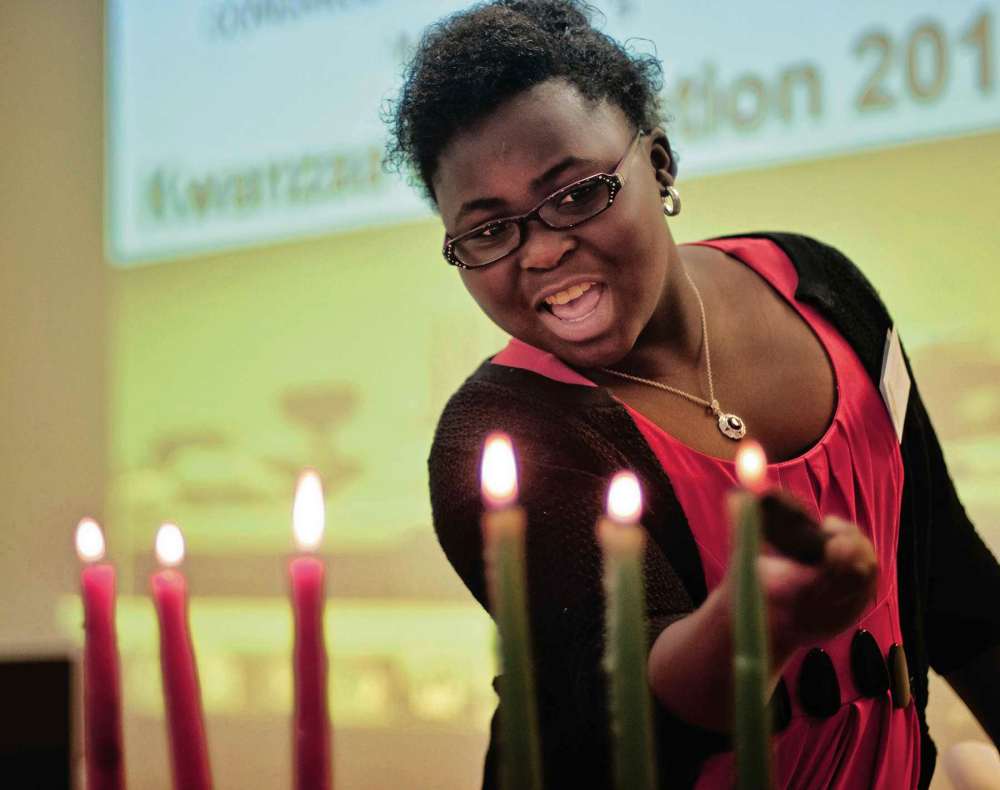‘Habari gani’ – what’s the news?
Advertisement
Hey there, time traveller!
This article was published 31/12/2021 (1436 days ago), so information in it may no longer be current.
The Congress of Black Women of Winnipeg has hosted Kwanzaa for more than 20 years to the delight of children of all ages and their parents.
This Afrocentric celebration occurs from Dec. 26 to Jan. 1 each winter and has been around for more than 50 years.
Kwanzaa originated in United States of America. It is a combination of the ancient African celebration of First Fruits or Thanksgiving and an exploration of the continuing freedom struggle of African-Americans. The celebration is designed to celebrate African cultural values, to reaffirm what it means to be of African heritage and to honor the ancestors upon whose shoulder the current generation stands.

Kwanzaa centres on seven principles. They are: unity; self-determination; collective work and responsibility; purpose; co-operative economics; creativity; and faith.
Ideally the elder or head of each family facilitates a discussion of each topic on the appropriate night, followed by libations, a feast and gifts for the children. The ceremony starts with the elder’s greeting; “habare gani” (Swahili for “what is the news”).
The participants respond by aming the Kwanzaa day. Families can be creative and develop their own format for the celebration.
Even though Kwanzaa is an Afrocentric celebration, the Kwanzaa principles are universal as it is not a religion and is not associated with Christmas so anyone could host their own or participate in Kwanzaa celebrations.
Kwanzaa encourages character development in children and a positive outlook in adults. Dr. Maulana Karenga, a professor at the University of California, Long Beach developed Kwanzaa in 1966 as a response to the systemic and overt racism that African -Americans experienced in the 1960s in America.
This unique celebration was intended to raise Black self-esteem and hope for the future.
Kwanzaa preparation begins with creating Afrocentric decor using African art and crafts and the colours red, black and green. The Kwanzaa table is the centerpiece, adorned with fresh fruits placed in a bowl that represents the community’s productivity, a seven-pronged candle holder for seven candles — three red, three green and one black, the middle candle. The red candles represent the blood shed for freedom; the three green candles represent hope for the future, the black candle stands for Black people.
Ears of corn represent the children within the home and gifts for the children should also be on the table.
The Kwanzaa cup holds the libation which is shared among family members and friends.
In Winnipeg, the Congress of Black Women compresses the seven-day celebration into a one-day event to demonstrate the ceremony format, and it is hoped that families will celebrate Kwanzaa in their homes as a way of bringing families closer and teaching the younger generations about their rich heritage and ancestral culture.
This year’s Kwanzaa celebration was held virtually on Dec. 27
Beatrice Watson is a community correspondent for Fort Rouge.

Beatrice Watson
Fort Rouge community correspondent
Beatrice Watson is a community correspondent for Fort Rouge.
Our newsroom depends on a growing audience of readers to power our journalism. If you are not a paid reader, please consider becoming a subscriber.
Our newsroom depends on its audience of readers to power our journalism. Thank you for your support.



